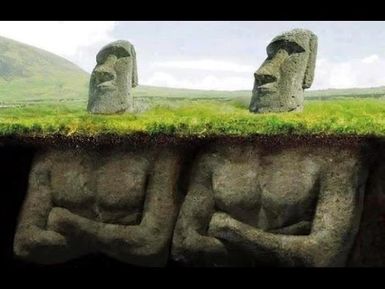
Easter Island, also known as Rapa Nui in the Rapa Nui language, is undoubtedly one of the most mysterious and fascinating lands in the Pacific Ocean. Discovered by Europeans in 1722, it has yet to reveal all its secrets, as seen in a recent series of photos.

The Moai, the famous giant heads of Easter Island, are undoubtedly one of the most recognized images in the world. However, there is still much we don’t know about these intriguing sculptures, carved from volcanic rock between the 12th and 17th centuries. Did you know that these famous heads actually have bodies?
It was through the archaeological excavations of the Easter Island Statues Project that the world was revealed the photos of these buried bodies that have been underground for hundreds of years. Started in 2012, this project has led to the discovery of nearly 887 statues. Approximately 150 of these statues are believed to have bodies partially buried in the ground. The research has uncovered sculpted bodies adorned with glyphs.

Underneath meters of soil, the bodies of the statues are preserved.

This Moaï is covered with enigmatic inscriptions.

The archaeologists are hard at work.

The emblem of Easter Island continues to unveil its mysteries.
These works not only provide further insights into the island’s past and its vanished early inhabitants but also serve to protect a fragile and unique cultural heritage in the world.